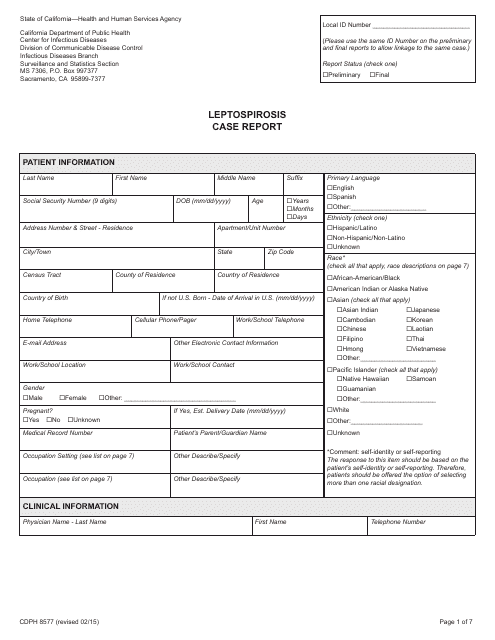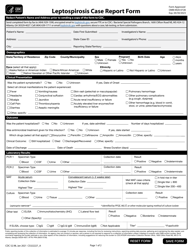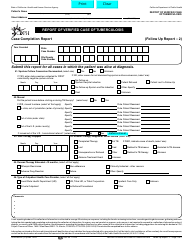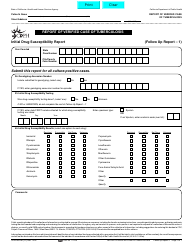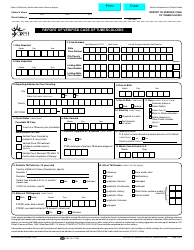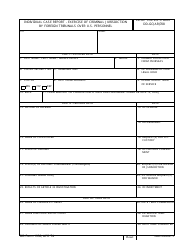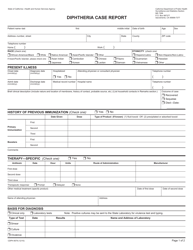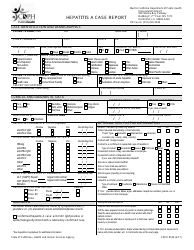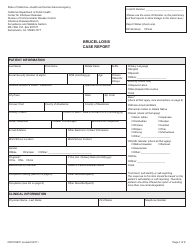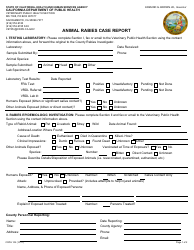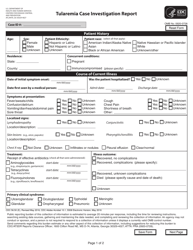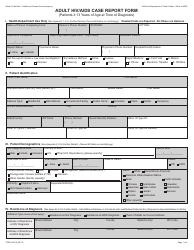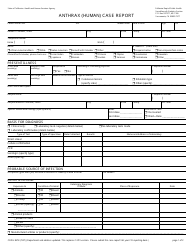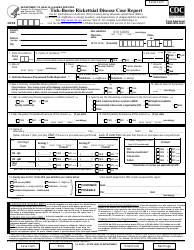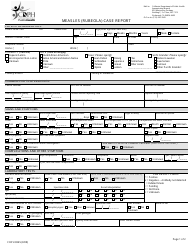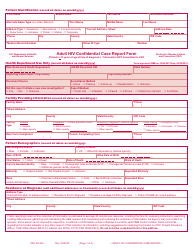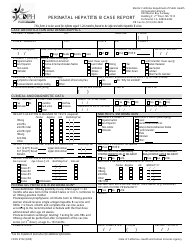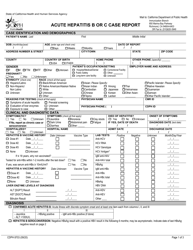Form CDPH8577 Leptospirosis Case Report - California
What Is Form CDPH8577?
This is a legal form that was released by the California Department of Public Health - a government authority operating within California. As of today, no separate filing guidelines for the form are provided by the issuing department.
FAQ
Q: What is Leptospirosis?
A: Leptospirosis is a bacterial infection caused by the Leptospira bacteria.
Q: How is Leptospirosis transmitted?
A: Leptospirosis is transmitted through contact with water, soil, or food contaminated with the urine of infected animals.
Q: What are the symptoms of Leptospirosis?
A: Symptoms of Leptospirosis can range from mild to severe and may include fever, headache, muscle aches, and vomiting.
Q: How common is Leptospirosis in California?
A: Leptospirosis is relatively rare in California, but cases can occur, especially among individuals exposed to contaminated water sources.
Q: How is Leptospirosis diagnosed?
A: Leptospirosis is diagnosed through a combination of symptoms, physical exam findings, and laboratory tests, such as blood or urine tests.
Q: Can Leptospirosis be treated?
A: Yes, Leptospirosis can be treated with antibiotics, such as doxycycline or penicillin.
Q: Is Leptospirosis preventable?
A: Leptospirosis can be prevented by avoiding contact with contaminated water or animals, practicing good hygiene, and ensuring proper sanitation measures.
Q: Are there any vaccines available for Leptospirosis?
A: Yes, there are vaccines available for Leptospirosis, but they may not be routinely recommended for all individuals.
Q: Who is at risk of contracting Leptospirosis?
A: Individuals who work or engage in recreational activities in environments with potential exposure to infected animals or contaminated water are at higher risk of contracting Leptospirosis.
Q: Is Leptospirosis contagious between humans?
A: Leptospirosis is generally not considered to be directly contagious between humans, but it can be indirectly transmitted through contaminated water sources.
Form Details:
- Released on February 1, 2015;
- The latest edition provided by the California Department of Public Health;
- Easy to use and ready to print;
- Quick to customize;
- Compatible with most PDF-viewing applications;
- Fill out the form in our online filing application.
Download a printable version of Form CDPH8577 by clicking the link below or browse more documents and templates provided by the California Department of Public Health.
